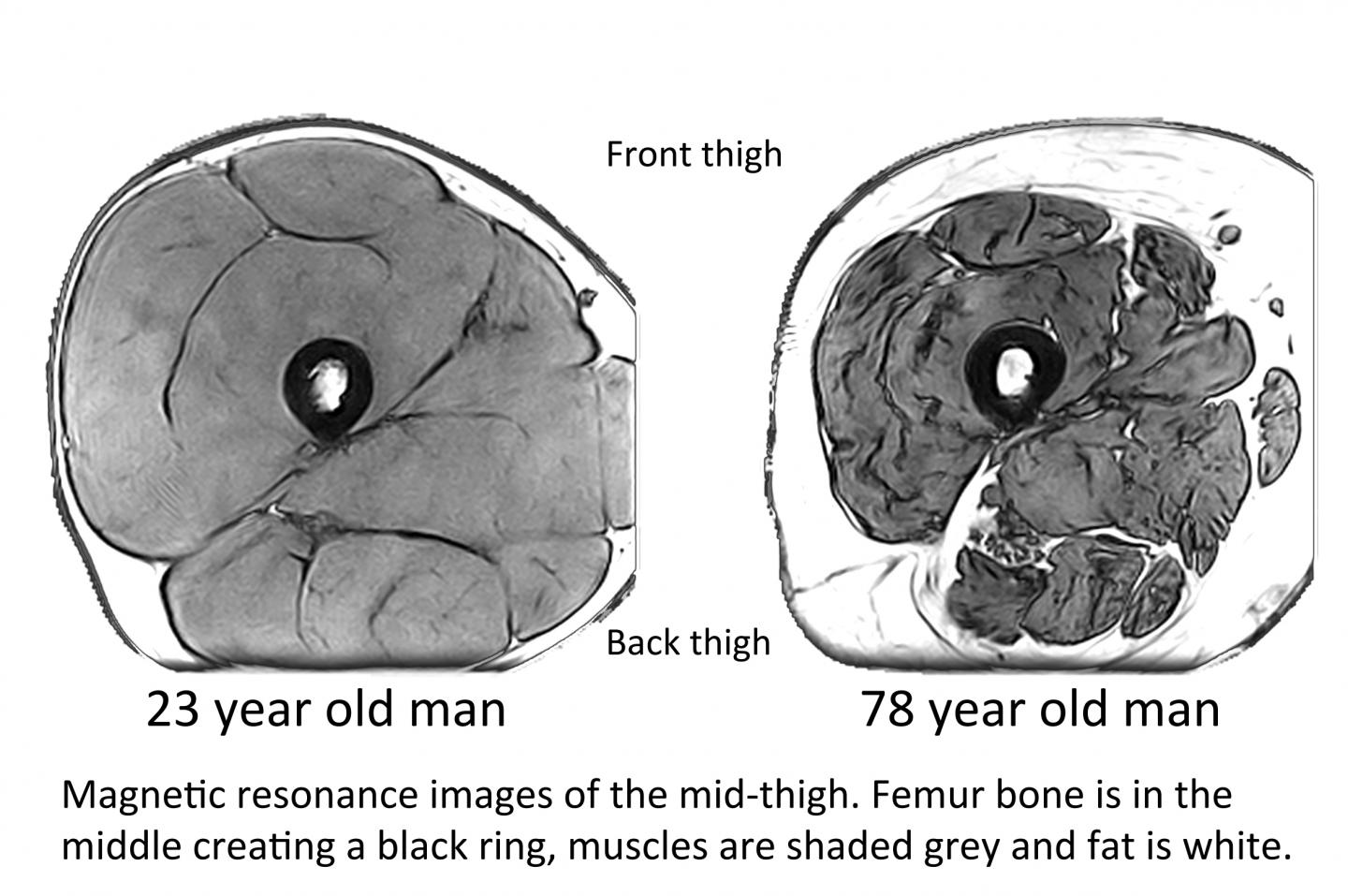
Credit: Piasecki et al.
New research published today helps explain why people experience muscle loss in old age, increasing the prospects of reversing the condition in the future.
As people grow older, their leg muscles become progressively smaller and weaker, leading to frailty and disability. While this process inevitably affects everyone living long enough, until now the process has not been understood. This new research, published in the Journal of Physiology, suggests that muscle wasting follows on from changes in the nervous system. By the age of 75, individuals typically have around 30 – 50% fewer nerves controlling their legs. This leaves parts of their muscles disconnected from the nervous system, making them functionally useless and so they waste away.
However, healthy muscles have a form of protection, in that surviving nerves can send out new branches to rescue some, but not all, of the detached muscle fibres. This protective mechanism is most successful in older adults with large, healthy muscles. When the internal protective mechanism is not successful and nerves are unable to send out new branches, it can result in extensive muscle loss. This can result in a condition called Sarcopenia, which affects an estimated 10-20% of people aged over 65 years.
The researchers do not yet understand why the connections between muscles and nerves remain healthy in some people and not in others. The race is now on to use this new knowledge to delay old-age weakness by either slowing the decline or by increasing the success of nerve branching to rescue detached muscle fibres.
The research carried out by Manchester Metropolitan University in conjunction with University of Waterloo, Ontario, and The University of Manchester, involved using MRI to gain a detailed look at the muscle tissue, followed by enhanced electromyography to record the electrical activity passing through the muscle to estimate the numbers and the size of surviving nerves available to rescue muscle fibres.
The researchers are currently looking at whether regular exercise in middle- and older-age slows the process of muscles becoming disconnected from the nervous system, or improves the success of nerve branching to rescue detached muscle fibres. The goal is to identify the best type of exercise – strength training or endurance – and to understand the physiology of why the nerve-muscle changes occur as we get older.
Professor Jamie McPhee, the senior author on the research, commented on the significance of the findings: "Our challenge now is to find ways to increase the success of nerve branching to rescue detached muscle fibres and thereby reduce the numbers of older people in our neighbourhoods with low muscle mass and muscle weakness. Right now in Europe there are at least 10 million older people with low muscle mass, which is a medical condition known as sarcopenia. They are at higher risk of social isolation, falling, bone fracture, disability and hospital admission. Weakness makes them particularly vulnerable to falls in bad weather, as we've had in recent weeks. Our research helps to explain why muscles decline with advancing age and this new knowledge will help in the search for effective countermeasures."
Dr Mathew Piasecki, the study lead author who has since taken up a position at the University of Nottingham, said: "One of the earliest attempts at research similar to ours showed results from a small group of older people who apparently had just a couple of surviving nerves feeding into a foot muscle. When we started out with our research we were very sceptical of the old data and thought it was an anomaly of out-dated testing procedures. However, now that we have tested a couple of hundred men we think the early observation was probably correct. We have also observed some very old muscles with just a few dozen nerves left, where young and healthy adults have hundreds."
###
Media Contact
Andrew Mackenzie
[email protected]
020-726-95728
@ThePhySoc
Related Journal Article
http://dx.doi.org/10.1113/JP275520





